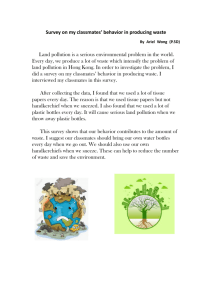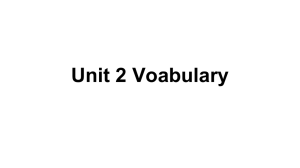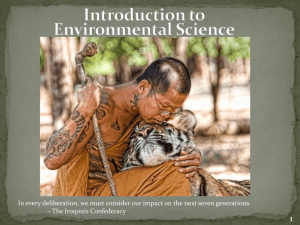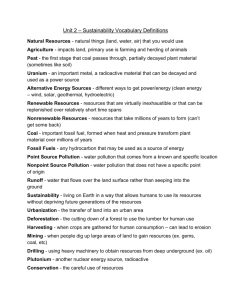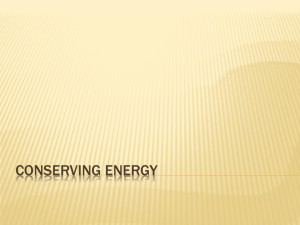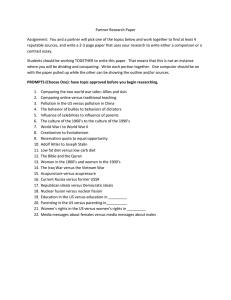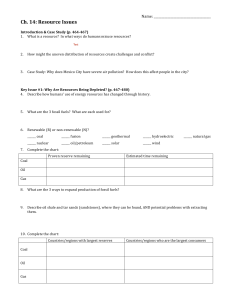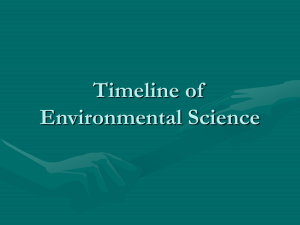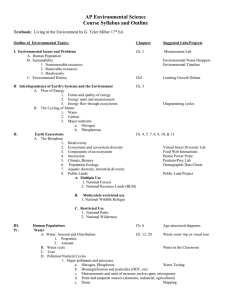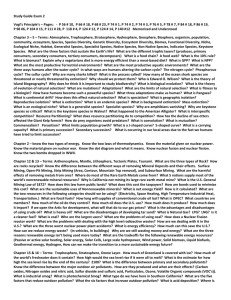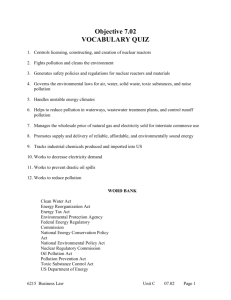Pre-Test File
advertisement
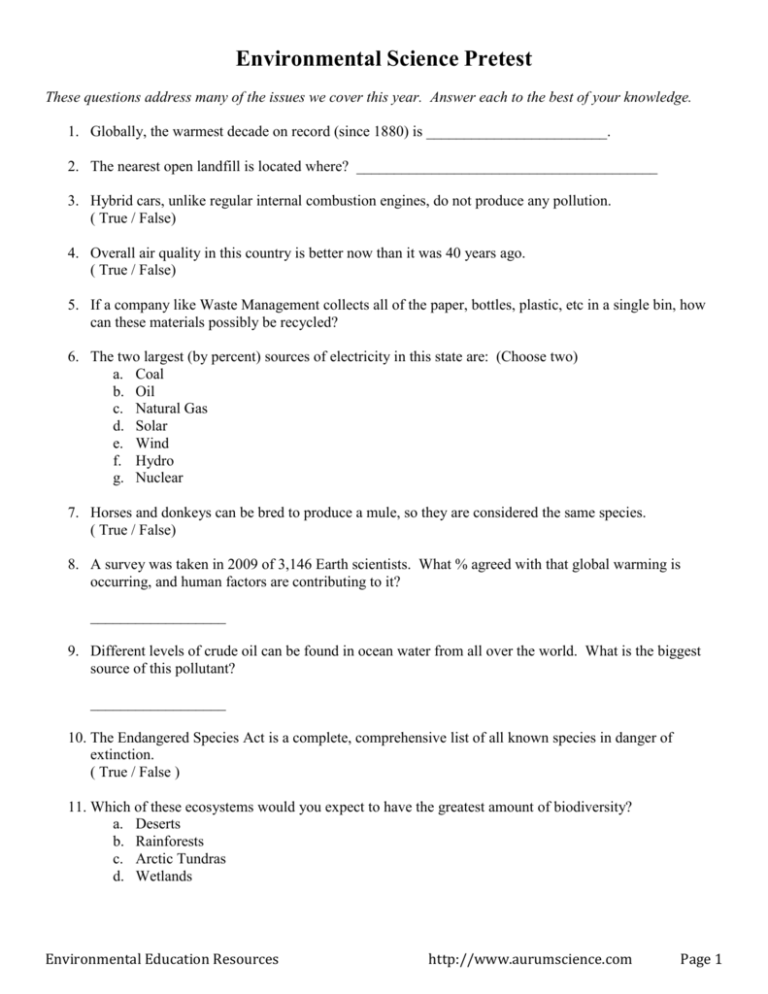
Environmental Science Pretest These questions address many of the issues we cover this year. Answer each to the best of your knowledge. 1. Globally, the warmest decade on record (since 1880) is ________________________. 2. The nearest open landfill is located where? ________________________________________ 3. Hybrid cars, unlike regular internal combustion engines, do not produce any pollution. ( True / False) 4. Overall air quality in this country is better now than it was 40 years ago. ( True / False) 5. If a company like Waste Management collects all of the paper, bottles, plastic, etc in a single bin, how can these materials possibly be recycled? 6. The two largest (by percent) sources of electricity in this state are: (Choose two) a. Coal b. Oil c. Natural Gas d. Solar e. Wind f. Hydro g. Nuclear 7. Horses and donkeys can be bred to produce a mule, so they are considered the same species. ( True / False) 8. A survey was taken in 2009 of 3,146 Earth scientists. What % agreed with that global warming is occurring, and human factors are contributing to it? __________________ 9. Different levels of crude oil can be found in ocean water from all over the world. What is the biggest source of this pollutant? __________________ 10. The Endangered Species Act is a complete, comprehensive list of all known species in danger of extinction. ( True / False ) 11. Which of these ecosystems would you expect to have the greatest amount of biodiversity? a. Deserts b. Rainforests c. Arctic Tundras d. Wetlands Environmental Education Resources http://www.aurumscience.com Page 1 12. Due to its massive population, China is now contributing more air pollution to the world’s atmosphere than the United States. ( True / False ) 13. An average individual living in the United States uses as many resources as __________ people in India. 14. Products made in foreign countries but sold in the United States must treat their workers fairly according to laws that have been passed here. ( True / False ) 15. Municipal tap water has stricter testing regulations than any other water source (bottled, etc) and is considered safe to drink. ( True / False ) 16. What percent of Earth’s total water supply is fresh (non-salt) water? a. More than 90% b. 50% c. 25% d. 3% e. Less than 1% 17. Where is the majority of the fresh water on Earth? _____________________________ a. Frozen as ice caps or glaciers b. Underground c. In lakes and ponds d. In the atmosphere 18. Plastic water bottles are safe to reuse because they do not break down over time. ( True / False ) 19. Aerosol cans release chemical compounds which destroy the ozone layer. ( True / False ) 20. Nuclear power plants do not directly release any air pollution; only steam. ( True / False ) 21. The average temperature in cities tends to be ( higher / lower / the same) as a natural ecosystem. 22. There are no nuclear power plants located within this county. ( True / False ) 23. All fish caught from Lake Michigan are considered safe to eat. ( True / False ) 24. There are enough known coal reserves to last about 150 years, under current usage. ( True / False ) 25. What is the current human population? ____________________________ 26. Extinction is a natural process. How many species of mammals would be expected to go extinct in a 200 year period due to natural causes? 27. What industry uses the greatest percentage of antibiotics produced in the United States? Page 2
